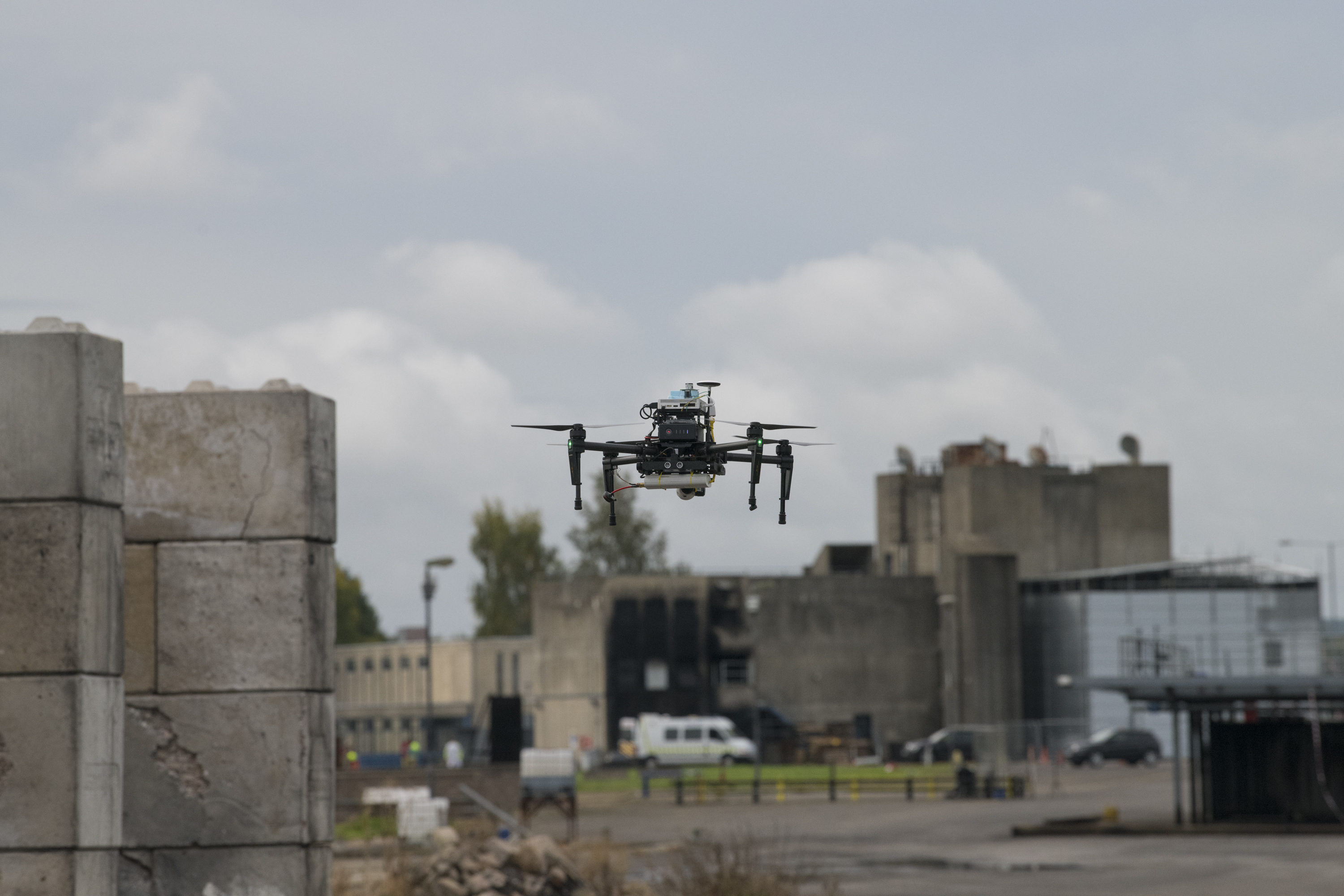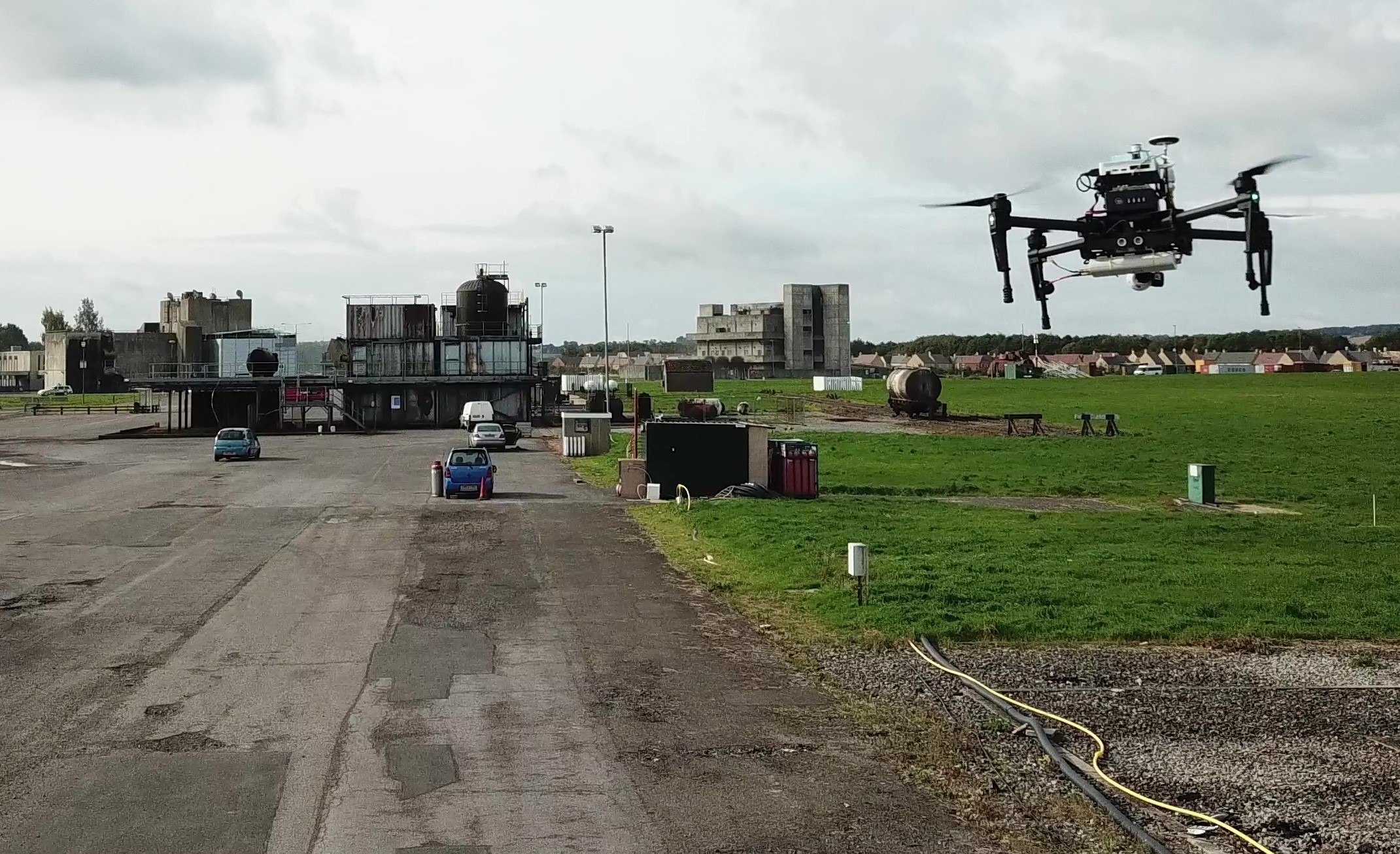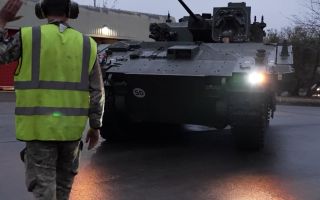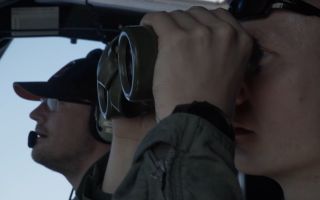
Military Tests Multi-Million-Pound Chemical Detection Drones

The project has been co-funded by the MoD and Home Office (Picture: Crown Copyright).
The military has trialled a fleet of drones and robots that can examine for chemical agents and biological threats.
The Ministry of Defence says the technology aims to reduce the risk to personnel attending incidents involving hazardous materials.
The £3 million Project Minerva launched in September 2016 saw a Snake Eye drone tested that can relay 3D images while detecting chemical agents using a laser system.
Concept drones and robots were used in scenarios involving contamination, set in both UK homeland and battlefield environments.
Scientists from Porton Down, the military research facility that tested for the nerve agent after the attack on former spy Sergei Skripal, were involved in the trial at the Fire Service College in Gloucestershire.

One hundred and twenty UK military personnel are currently helping with the general decontamination of Salisbury, following the poisoning of former Russian double spy Sergei Skripal and his daughter Yulia. Both have since recovered.
Extra British personnel were deployed to begin decontamination work on Sergei Skripal's home in Salisbury earlier this month.
Defence Secretary Gavin Williamson said: "Following the reckless nerve agent attack in Salisbury this year, we have seen the bravery and professionalism of our Armed Forces, emergency services and MoD scientists.
"They have worked tirelessly to investigate and clean up deadly contaminated areas.
"This project will ensure we stay at the forefront of dealing with such heinous attacks, whether on our streets or on foreign battlefields."
Major John Green, Military Advisor CBR Division for the Defence Science and Technology Laboratory (DSTL), which is leading Project Minerva, said: "The military is putting a lot of time and effort into CBRN [chemical, biological, radiological and nuclear] and Minerva could have a significant effect on our capability and potentially decrease the training burden.
"It is a project for everything else to build on."
Salisbury has been subjected to a widespread testing for the nerve agent after it was used in the attack against the Skripals in March.
His daughter Yulia was also successfully treated, but about three months later a 44-year-old woman, Dawn Sturgess, died after inadvertently coming into contact with the agent stored in a perfume bottle.
Police and the Government have accused two men alleged to be Russian military intelligence service officers of carrying out the attack on the orders of the Kremlin.







